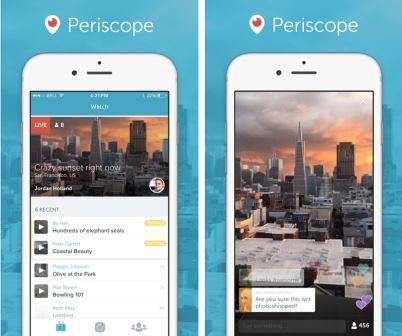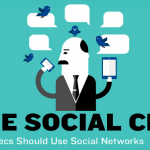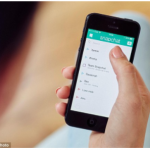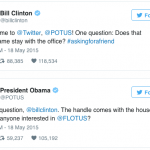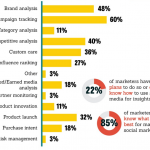5 Myths About Social Media You Need To Stop Believing
April 29, 2016
“Social media is just fluff”, “you can’t really measure your impact,” “to be successful you need a huge audience”. I’m sure you’ve heard or even said some or all of those lines at some point, as they’re definitely not uncommon. In fact, they are some of the most common myths about social media. So let’s set the record straight once and for all and crush them one by one.
Myth #1: Social Media has no real ROI
Twitter turned 10 this year and Facebook is already set for the long haul. Social media is here to stay and smart brands not only realize that in fact there is a ROI but most importantly, they know how to measure it.
A recent study found that still only 15% of brands are able to quantify the impact of social media on their activities. So which metrics will help you evaluate the social media impact on your brand? As on any other marketing channel you are able to measure leads, conversions, visits to your website or specific campaigns.
Avinash Kaushik is suggesting among others, three main metrics:
- Conversation rate, in other words how much conversation your brand stirs on social media.
- Amplification rate, how much your message is being shared and what is its reach.
- Applause rate which is how much minimal interaction (favorites, likes and +1s) your content receives on social media.
These groups of metrics point to social media exposure which translates to brand awareness, brand influence, engagement and leads or sales.
So don’t let anyone tell you that time and resources spent on social media might be better spent elsewhere. Social media can not only help you build awareness for your brand but also establish yourself as a thought leader in your field and ultimately generate leads.
In fact, a recent research conducted by LinkedIn revealed that:
- 81% of SMBs currently use social media to drive business growth and 9% are planning to use it in the future.
- 3 in 5 SMBs say it helps to gain new customers.
- 91% of hyper growth SMBs say it is effective for increasing awareness and 82% for generating new leads – which is more than 58% higher than the stated effectiveness for non-growth companies.
Although social media may not be necessarily a short cut, it can definitely become a marketing power tool in your hands.
Myth #2: Social Media takes a lot of time and effort
Ok this is not entirely a myth. Of course social media takes time and effort because nothing will work unless you do, but it takes much less that what you might think.
From content curation to posting and analyzing your performance, it is important to keep your social media management simple and effective while minimizing the time you spent on performing your day-to-day tasks.
Luckily, there’s a bunch of tools out there to help you simplify your social media management save lots of time every day. Take a look at some of my most favorite tools of daily quick and effective social media management.
Content curation
Feedly
Feedly is basically a news aggregator that can pull any RSS feed. You can completely personalize your experience and add all your favorite news sources and blogs into a stream so that every day you can immediately find great articles in your niche to share. Feedly also shows the number of shares for each piece which is a great way to quickly grasp the social media buzz around a topic.
Canva
By now social media science has proven that this is what people love to retweet. And luckily, you don’t always need have professional design skills to put together engaging images for social media.
My absolute favorite tool is Canva because it’s insanely easy to use and you can have an amazing result in less than 5 minutes. Canva is offers pre-built templates for social media posts so no need to worry about resizing. Once you pick the template, the rest is basically just dragging and dropping. You can choose to upload your own visuals and build something from scratch or choose something from Canva’s amazing graphics and use customize it to fit your style.

Posting and scheduling
Buffer
Buffer is a great app for scheduling your content, especially if you’re managing many different social media channels. What’s even more time saving about Buffer is that you can quickly schedule content from anywhere on the web using their browser plugin.
Friends+me
Although it started as a Google+ tool, Friends+me is a good alternative to Buffer that allows you to schedule content across platforms, from anywhere on the internet.
Analysis and Monitoring
Tweetdeck
TweetDeck is sort of a wildcard tool as you can also schedule tweets but its real power lies in Twitter monitoring. Tweetdeck is basically a dashboard where you can keep track of your account’s interactions, monitor hashtags and keywords, making it faster and easier to reply to comments and engage in Twitter conversations.
Twitter Counter
When you’re on a tight schedule you need to get as many insights as possible without having to spend your whole day crunching numbers. From a quick overview of your account’s follower growth, engagement rate and most successful content to an insightful report of all the important metrics, it can all be done in just a click. Take a look for yourself.
Myth #3: The number of followers is really important
Maybe to your boss who has no idea about how social media works, it is. But come on, you know better than this! I’m not saying that you should completely disregard this metric because after all, it does contribute to how your audience perceives your brand online (and let’s just face it, we’re all a bit vain).
However, having a vast audience of irrelevant followers on social media is not likely to drive your business goals and marketing KPIs. Which is why social media savvy brands focus more on building a quality audience through engagement and sharing relevant content.
More than that, they realize that social media is not just a one-way communication. On the contrary, they are conversational and interact with their audience. They prioritize community building and engagement, as well as on establishing meaningful relationships with current and prospective customers and industry influencers.
Long story short, spending as much as a few minutes a day asking questions, replying to comments, engaging with your community and sharing their content can really make a difference.
Myth #4: Video on social is for billionaires
Everybody is talking about the rise of video on social, and for a good reason. Visual content drives the most engagement, which explains why Facebook and Twitter have incorporated video and live broadcasting into their roadmaps and why platforms such as Blab and Snapchat have been such a success.
Why is this good news for you, you ask. With the rise of live broadcasting you can drive engagement and connect with your audience in a more direct way, without needing to hire a professional video crew or to have professional level video skills. We live at a time when anyone can broadcast live from their phone. All it takes, is some creativity to make sure your content stands out.

Myth #5: I need to be active on every single platform
Simply put, the fact that there’s a bunch of social media platforms out there doesn’t mean that you need to be present on each of them. I know that Snapchat is all new and shiny to you and everybody is talking about it but take a step back before you jump to it. It makes much more sense to focus most of your efforts on the social platforms that make sense to you and your audience, and are likely to generate the highest impact.
A recent study by Hubspot revealed that most consumers expect you to be active on all social media platforms, and especially Facebook and Twitter. In fact, millennials expect brands to be active on at least four platforms. But despite these expectations, the same audience is most likely to follow you only on half of these platforms.

The platforms that are more likely to have the biggest impact for your business are the ones that your audience is using and that are relevant to your product or service. If for example you’re a local retailer, a platform like Google+ is less likely to prove impactful for your brand so there’s no need to invest any time and effort on building your presence there, as your ROI will be relatively low.
A good way to decide where your time will have the most impact is running a super quick social media audit. Here’s how it works:
Step 1: List all the platforms you are active on with links to your social media profiles.
Step 2: Update any imagery and profile description that needs to be updated.
Step 3: Check some key metrics such as audience growth, reach, engagement and traffic generated from this platform.
Step 4: Evaluate your presence on each social media platform by checking your KPIs. This process will help you gain some perspective and assess where you should focus your efforts from now on.

Another way to make better use of your time is making a division between high frequency and low frequency platforms. For example, as a rule of thumb, Twitter is a higher frequency platform which means that it requires a higher number of posts. Facebook, Instagram, LinkedIn on the other hand, could be considered lower frequency platforms with the volume varying from one to two posts a day to one to two posts per week.
Of course this division comes down to your own social media strategy, how you’ve chosen to manage social media and the goals you have set for each platform depending on your audience. Making such a plan however, can provide you with a better perspective on allocating your time and placing your efforts where you need to.
Conclusion
There’s a lot to be said about social media marketing and its value. And although social media as a concept is still evolving and brands are still discovering its potential, its power as a marketing tool is a fact rather than a myth.
Any social media myths you’re still believing in? Let us know in the comments right below!
Digital & Social Articles on Business 2 Community
(9)

